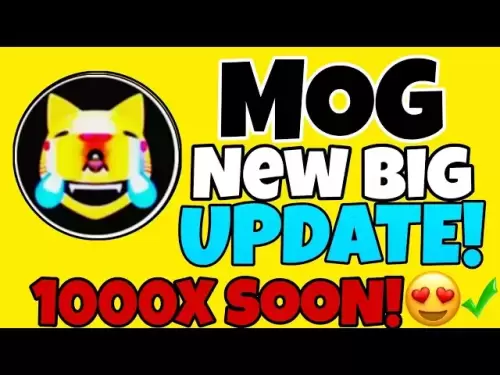-
 Bitcoin
Bitcoin $118300
-0.58% -
 Ethereum
Ethereum $3825
0.11% -
 XRP
XRP $3.137
-0.71% -
 Tether USDt
Tether USDt $0.9999
-0.01% -
 BNB
BNB $803.9
-3.37% -
 Solana
Solana $181.5
-1.94% -
 USDC
USDC $0.9999
0.01% -
 Dogecoin
Dogecoin $0.2238
-2.51% -
 TRON
TRON $0.3358
2.12% -
 Cardano
Cardano $0.7844
-2.16% -
 Hyperliquid
Hyperliquid $43.31
-1.48% -
 Sui
Sui $3.807
-4.04% -
 Stellar
Stellar $0.4203
-1.96% -
 Chainlink
Chainlink $17.79
-3.00% -
 Bitcoin Cash
Bitcoin Cash $567.8
-1.34% -
 Hedera
Hedera $0.2614
-4.30% -
 Avalanche
Avalanche $24.19
-4.46% -
 Litecoin
Litecoin $109.2
-0.74% -
 UNUS SED LEO
UNUS SED LEO $8.969
-0.01% -
 Toncoin
Toncoin $3.404
3.97% -
 Ethena USDe
Ethena USDe $1.001
-0.01% -
 Shiba Inu
Shiba Inu $0.00001307
-3.19% -
 Uniswap
Uniswap $10.33
-1.23% -
 Polkadot
Polkadot $3.884
-4.06% -
 Monero
Monero $312.9
-1.87% -
 Dai
Dai $1.000
0.01% -
 Bitget Token
Bitget Token $4.537
-2.24% -
 Pepe
Pepe $0.00001156
-3.40% -
 Cronos
Cronos $0.1437
-0.89% -
 Aave
Aave $282.8
-2.77%
The money-making logic of the Web3 era: how to get started quickly?
Web3 offers new ways to earn through DeFi, NFTs, yield farming, and dApps, empowering users with control over their digital assets in a decentralized internet.
Jun 13, 2025 at 07:14 am

In the rapidly evolving world of cryptocurrency, the term Web3 has become increasingly significant. The Web3 era signifies a shift towards a decentralized internet, where users have more control over their data and digital assets. This transformation opens up new avenues for making money, leveraging blockchain technology and cryptocurrencies. To get started quickly in this new era, it's essential to understand the fundamental logic behind earning opportunities and the steps to begin your journey.
Understanding the Basics of Web3
Before delving into the money-making aspects, it's crucial to grasp what Web3 entails. Web3 refers to the next generation of the internet, characterized by decentralization, blockchain technology, and token-based economics. Unlike the traditional Web2 model, where large corporations control and monetize user data, Web3 empowers individuals to own and manage their digital assets. This shift creates numerous opportunities for earning through various decentralized platforms and applications.
Key Money-Making Opportunities in Web3
The Web3 ecosystem offers several ways to generate income. Here are some of the most prominent methods:
- Decentralized Finance (DeFi): DeFi platforms allow users to lend, borrow, and trade cryptocurrencies without intermediaries. By participating in these activities, you can earn interest, trading fees, and other rewards.
- Non-Fungible Tokens (NFTs): NFTs represent unique digital assets, such as art, music, and virtual real estate. Creating and selling NFTs can be a lucrative way to monetize your creative work.
- Yield Farming and Staking: These methods involve locking up your cryptocurrencies to support blockchain networks and earn rewards in return. Yield farming and staking are popular ways to generate passive income.
- Decentralized Applications (dApps): dApps are applications built on blockchain networks that offer various services, from gaming to social media. Participating in these platforms can earn you tokens and other incentives.
Getting Started with DeFi
Decentralized Finance (DeFi) is one of the most accessible entry points into Web3 earning opportunities. Here's how to get started:
- Choose a DeFi Platform: Research and select a reputable DeFi platform, such as Uniswap, Aave, or Compound. Each platform offers different services and rewards.
- Set Up a Wallet: You'll need a cryptocurrency wallet compatible with the platform you choose. Popular options include MetaMask, Trust Wallet, and Ledger.
- Fund Your Wallet: Transfer the necessary cryptocurrencies from an exchange or another wallet to your DeFi-compatible wallet.
- Connect to the Platform: Use your wallet to connect to the DeFi platform. Follow the platform's instructions to lend, borrow, or trade cryptocurrencies.
- Monitor and Manage: Keep an eye on your investments and adjust your strategies as needed to maximize returns.
Creating and Selling NFTs
Non-Fungible Tokens (NFTs) have become a significant part of the Web3 economy. Here's how to start creating and selling them:
- Choose an NFT Marketplace: Select a reputable NFT marketplace, such as OpenSea, Rarible, or Foundation. Each platform has its own fees and features.
- Set Up Your Account: Create an account on the chosen marketplace and link it to your cryptocurrency wallet.
- Create Your NFT: Use the platform's tools to mint your NFT. This typically involves uploading your digital asset, setting a price, and adding a description.
- List Your NFT for Sale: Once created, list your NFT on the marketplace. You can set a fixed price or opt for an auction.
- Promote Your NFT: Use social media and other channels to promote your NFT and attract buyers.
- Complete the Sale: When your NFT sells, the funds will be transferred to your wallet, minus any platform fees.
Participating in Yield Farming and Staking
Yield farming and staking are popular ways to earn passive income in the Web3 era. Here's how to get started:
- Choose a Platform: Research and select a platform that offers yield farming or staking opportunities. Examples include PancakeSwap, SushiSwap, and Tezos.
- Set Up Your Wallet: Ensure your cryptocurrency wallet is compatible with the chosen platform.
- Fund Your Wallet: Transfer the necessary tokens to your wallet.
- Connect to the Platform: Use your wallet to connect to the platform and select the pools or validators you want to participate in.
- Deposit Your Tokens: Lock up your tokens in the chosen pools or with validators to start earning rewards.
- Monitor and Adjust: Regularly check your earnings and adjust your strategy as needed to optimize returns.
Engaging with Decentralized Applications (dApps)
Decentralized Applications (dApps) offer various ways to earn tokens and other incentives. Here's how to get started:
- Research dApps: Explore different dApps and find those that align with your interests, whether it's gaming, social media, or finance.
- Set Up Your Wallet: Ensure your wallet is compatible with the dApp you choose.
- Connect to the dApp: Use your wallet to connect to the dApp and start participating in its ecosystem.
- Earn Rewards: Follow the dApp's rules to earn tokens, rewards, or other incentives. This might involve playing games, creating content, or providing liquidity.
- Withdraw Your Earnings: When ready, withdraw your earnings to your wallet and decide how to use or reinvest them.
Frequently Asked Questions
Q: What is the difference between Web2 and Web3?
A: Web2 refers to the current internet model, dominated by centralized platforms that control and monetize user data. Web3, on the other hand, is a decentralized model where users have control over their data and digital assets, facilitated by blockchain technology and token-based economics.
Q: Are there any risks associated with earning money in the Web3 era?
A: Yes, there are risks involved, including market volatility, smart contract vulnerabilities, and regulatory uncertainties. It's important to conduct thorough research and consider these risks before investing or participating in Web3 earning opportunities.
Q: Can I earn money in Web3 without technical knowledge?
A: While some technical knowledge can be beneficial, many Web3 platforms and applications are designed to be user-friendly. You can start with simple activities like staking or participating in dApps, which require minimal technical expertise.
Q: How do I stay updated on the latest Web3 opportunities?
A: Staying informed involves following reputable crypto news sources, joining online communities and forums, and subscribing to newsletters from Web3 platforms. Engaging with the community can also provide insights into new opportunities and trends.
Disclaimer:info@kdj.com
The information provided is not trading advice. kdj.com does not assume any responsibility for any investments made based on the information provided in this article. Cryptocurrencies are highly volatile and it is highly recommended that you invest with caution after thorough research!
If you believe that the content used on this website infringes your copyright, please contact us immediately (info@kdj.com) and we will delete it promptly.
- Shiba Inu, Dogecoin, Crypto Soar? Meme Coins Face New Challenger!
- 2025-07-30 17:30:12
- UNITE, KuCoin, and the Future of Mobile Gaming: A New York Minute on Web3
- 2025-07-30 16:30:12
- Strategy, Bitcoin, Investment: Riding the Crypto Wave Like a Pro
- 2025-07-30 16:30:12
- JD.com, Jcoin, and Stablecoins: Hong Kong's Regulatory Embrace
- 2025-07-30 16:50:11
- Dogecoin Price Breakout: Will DOGE Bark Up the Right Tree?
- 2025-07-30 17:30:12
- Ethereum, Stablecoins, and the GENIUS Act: A New Era?
- 2025-07-30 18:10:11
Related knowledge

How to avoid common crypto investment mistakes?
Jul 13,2025 at 01:35am
Understanding the Risks of Crypto InvestmentInvesting in cryptocurrency can be highly rewarding, but it also comes with significant risks. One of the ...

What is a long-short crypto strategy?
Jul 15,2025 at 10:56am
Understanding the Basics of a Long-Short Crypto StrategyA long-short crypto strategy is an investment approach where traders simultaneously take long ...

What is a long-short crypto strategy?
Jul 11,2025 at 01:28pm
Understanding the Basics of Long-Short Crypto StrategyA long-short crypto strategy is an investment approach where traders take both long and short po...

How to use the RSI indicator for crypto?
Jul 12,2025 at 03:56pm
Understanding the RSI Indicator in Cryptocurrency TradingThe Relative Strength Index (RSI) is a momentum oscillator used to measure the speed and chan...

Is copy trading a good strategy for crypto beginners?
Jul 12,2025 at 08:28am
Understanding Copy Trading in the Cryptocurrency MarketCopy trading is a strategy where novice traders replicate the trades of experienced investors a...

How to build a crypto portfolio with $1000?
Jul 13,2025 at 08:14pm
Understanding the Basics of Cryptocurrency InvestmentBuilding a crypto portfolio with $1000 starts with understanding the fundamentals of cryptocurren...

How to avoid common crypto investment mistakes?
Jul 13,2025 at 01:35am
Understanding the Risks of Crypto InvestmentInvesting in cryptocurrency can be highly rewarding, but it also comes with significant risks. One of the ...

What is a long-short crypto strategy?
Jul 15,2025 at 10:56am
Understanding the Basics of a Long-Short Crypto StrategyA long-short crypto strategy is an investment approach where traders simultaneously take long ...

What is a long-short crypto strategy?
Jul 11,2025 at 01:28pm
Understanding the Basics of Long-Short Crypto StrategyA long-short crypto strategy is an investment approach where traders take both long and short po...

How to use the RSI indicator for crypto?
Jul 12,2025 at 03:56pm
Understanding the RSI Indicator in Cryptocurrency TradingThe Relative Strength Index (RSI) is a momentum oscillator used to measure the speed and chan...

Is copy trading a good strategy for crypto beginners?
Jul 12,2025 at 08:28am
Understanding Copy Trading in the Cryptocurrency MarketCopy trading is a strategy where novice traders replicate the trades of experienced investors a...

How to build a crypto portfolio with $1000?
Jul 13,2025 at 08:14pm
Understanding the Basics of Cryptocurrency InvestmentBuilding a crypto portfolio with $1000 starts with understanding the fundamentals of cryptocurren...
See all articles

























































































